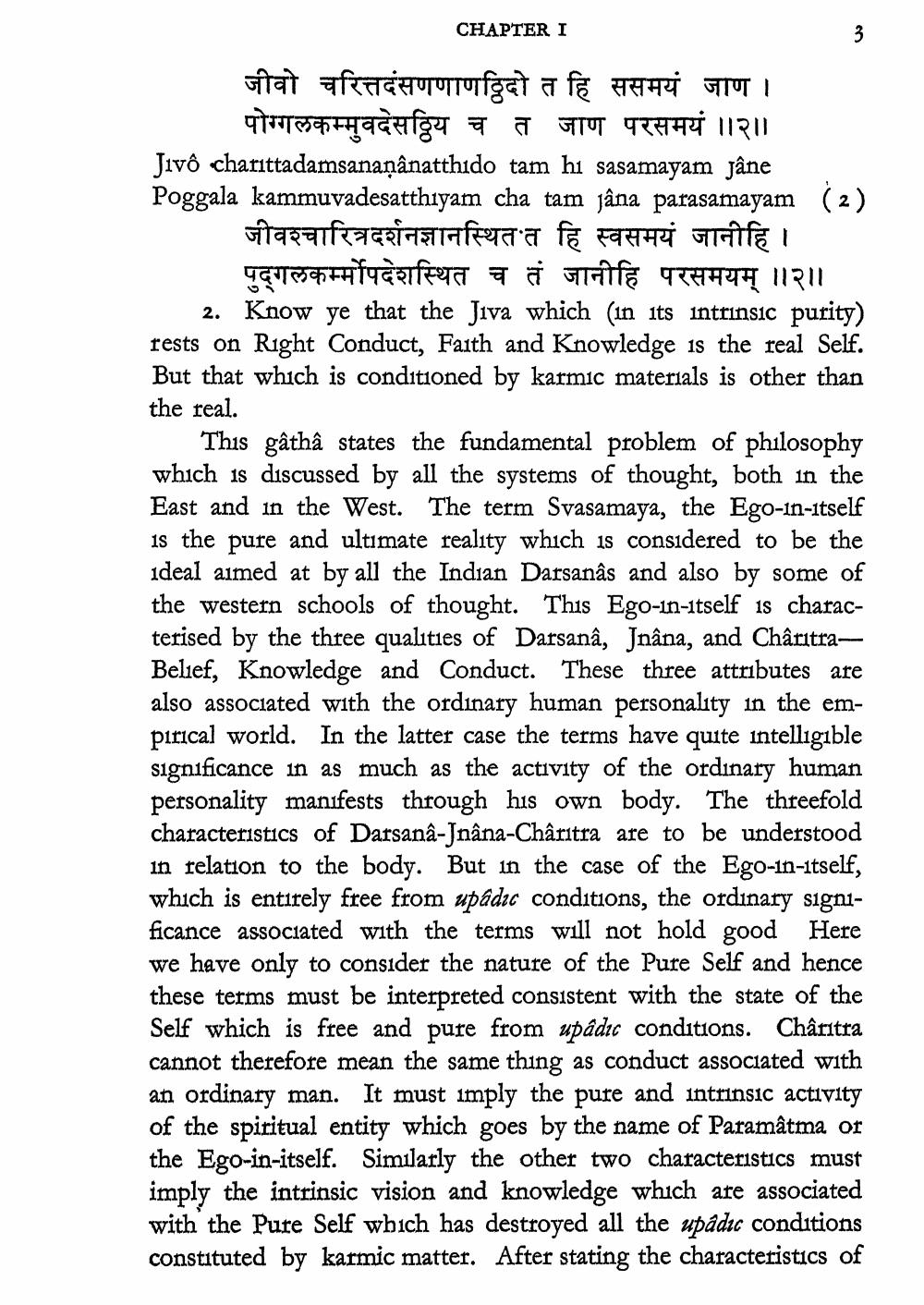________________
CHAPTER I
जीवो चरित्तदसणणाणठ्ठिदो त हि ससमयं जाण ।
पोग्गलकम्मवदेसठ्ठिय च त जाण परसमयं ॥२॥ Jivô charittadamsanamânatthido tam hi sasamayam gâne Poggala kammuvadesatthiyam cha tam jâna parasamayam (2)
जीवश्चारित्रदर्शनज्ञानस्थित त हि स्वसमयं जानीहि ।
पुद्गलकर्मोपदेशस्थित च तं जानीहि परसमयम् ॥२॥ 2. Know ye that the Jiva which in its intrinsic purity) rests on Right Conduct, Faith and Knowledge is the real Self. But that which is conditioned by karmic materials is other than the real.
This gâthâ states the fundamental problem of philosophy which is discussed by all the systems of thought, both in the East and in the West. The term Svasamaya, the Ego-in-itself is the pure and ultimate reality which is considered to be the ideal aimed at by all the Indian Darsanâs and also by some of the western schools of thought. This Ego-in-itself is characterised by the three qualities of Darsanâ, Jnâna, and ChâritraBelief, Knowledge and Conduct. These three attributes are also associated with the ordinary human personality in the empirical world. In the latter case the terms have quite intelligible significance in as much as the activity of the ordinary human personality manifests through his own body. The threefold characteristics of Darsanâ-Jnâna-Châritra are to be understood in relation to the body. But in the case of the Ego-in-itself, which is entirely free from upādic conditions, the ordinary significance associated with the terms will not hold good Here we have only to consider the nature of the Pure Self and hence these terms must be interpreted consistent with the state of the Self which is free and pure from upâdıc conditions. Charitra cannot therefore mean the same thing as conduct associated with an ordinary man. It must imply the pure and intrinsic activity of the spiritual entity which goes by the name of Paramâtma or the Ego-in-itself. Similarly the other two characteristics must imply the intrinsic vision and knowledge which are associated with the Pure Self which has destroyed all the upadıc conditions constituted by karmic matter. After stating the characteristics of




